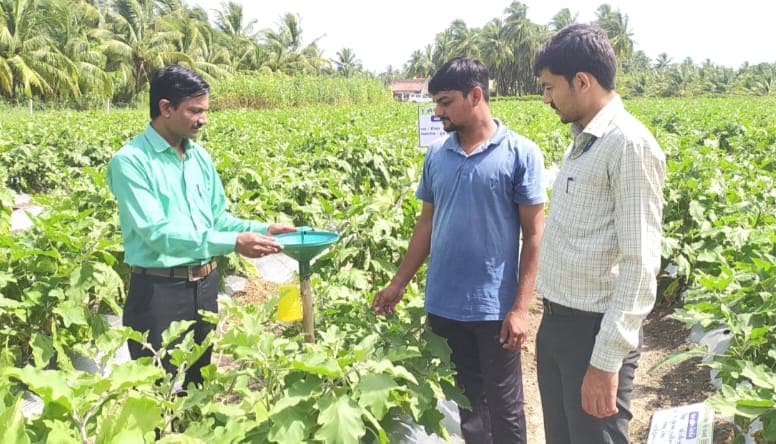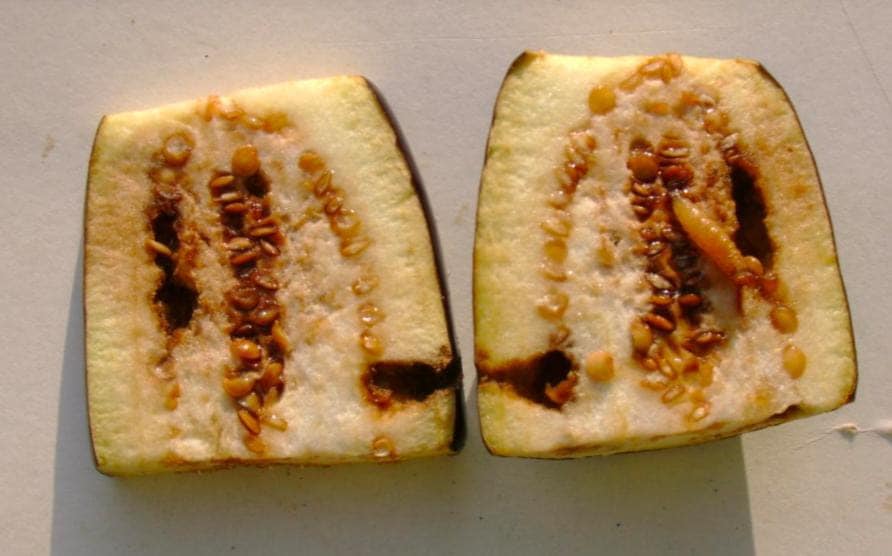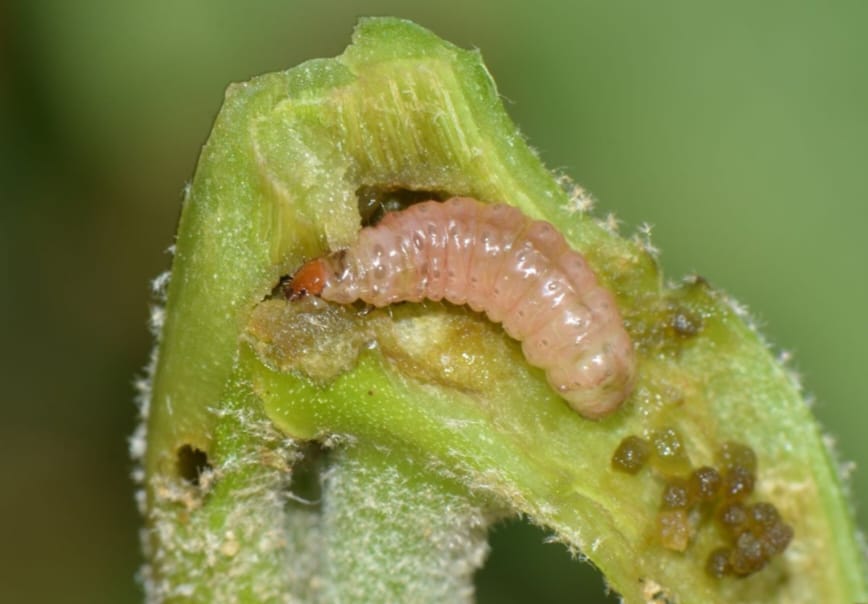People are more healthy in winter. At present, reduction in production due to insect and caterpillar diseases of brinjal plant and brinjal has been observed. Farmers should identify and control the disease.

How to identify the caterpillars that damage crops?
The adult moth is medium in size, with white forewings with brown and black stripes and dots. While there is a single black dot on the hind wings. Adult female lays flat and oval shaped eggs,

Lays on twigs and flowers and sometimes on fruit. Early larvae are pale white in color. Which becomes pale pink and the head is brown in colour. The mite completes its life cycle in 25 to 40 days.
from your city (immortal)

What damages crops
When the crop is young, the caterpillars initially eat the corri. So the onion and the leaves around it wither and the onion gets bent. As the brinjal begins to set, small caterpillars enter the fruit and damage the fruit inside.

After the caterpillar completes its development, it makes a hole in the fruit and comes out, damaging the flower and the bud, and then makes cochets. So round holes appear on the damaged brinjal. Due to this damage, the vitamin C in the fruit is reduced.

What should be done to control the disease?
Planting of disease resistant varieties. Crop rotation should be done in monsoons in early September and second fortnight of January. Placing light cages can also kill moths. Damaged bulbs and fruit clusters should be removed. Apply 5 Watta tree traps per acre and change the lure periodically. For insect control, spray lemon oil (Azadirectin 1500 ppm) 60 ml or Beveria Bassia 80 g in 15 liters of water.
According to the experience of many farmers, applying 1 kg per acre of EPN available in the market when the soil is moist and spraying 50 grams in a pump also gives good results. If the infestation is high, use insecticides. In which Amamectin Benzoate 5 SG 8 g or Chlorantrenilipol 18.5 SG 5 ml or Thiodicarb 75 % wettable powder 30 g in 15 liters of water should be sprayed.
The treasure of Gujarati news is News18 Gujarati. Read more news including Gujarat, Foreign, Bollywood, Sports, Business, Entertainment on News18 Gujarati
Tags: Amreli News, Farmer in Gujarat, Local 18





